creation of gothic
explore and date the creation of gothic architecture
Welcome!
This Survey into the creation of the Gothic style before 1250 explores all 1600 churches that remain in the limestone region of the Paris Basin, accessibly gathered in one place. Preliminary Survey results were published in The Art Bulletin in 1984.
As I begin to identify real people among the carvers, and to follow their work from church to church we can plot where they travelled and use stylistic changes to arrange their work in time. It is the capitals that offer the best clues to when the many undocumented churches were built.
The few that are datable have been integrated with the enormous mass of material gathered from the continuation of that Survey to estimate the detailed chronology set out here.
We get a first glimpse of the carvers and their travels in search of work in the Explore Carvers page. At any stage a detailed investigation into the individuals and the evolution of their creativity is innovative and uncertain. Renaissance studies are rich with the names of artists and architects, and we hope that Early Gothic may be approaching the same moment.
I am an Australian architect and historian, and have been privileged over the past 50 years with the keys to explore all the hidden and restricted areas of these intriguing buildings from towers to crypts. I have become an intimate friend of some of the finest architecture of all times.
Are you are a Student studying for a thesis; or a Scholar looking for details or fresh ideas; or are you captivated by the unknown and want to learn more? There is something here for all of us who love these buildings and travel on this amazing journey.
You are encouraged to explore, and to share your thoughts with me, your questions and your answers.
John James
-

Project
This site offers a holistic way to study the evolution of Gothic architecture through all 1600 buildings in the Paris Basin that contain something from the period before 1250.
-
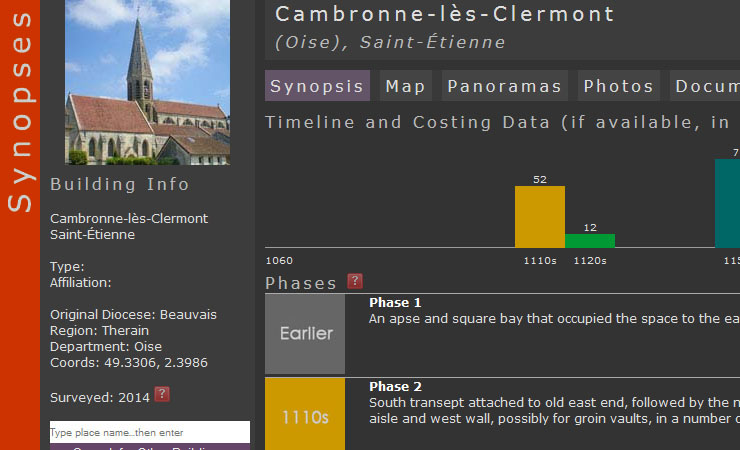
Synopses
The phases of construction with approximate decades for over 800 churches with timelines and expenditure offer a snapshot of the construction history with relative expenditure.
-
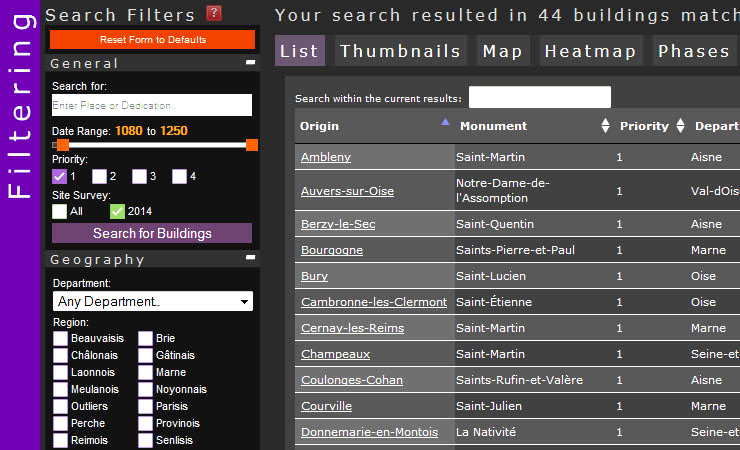
Filtering
Analyse the data by choosing a building, or any combination of dates, departement, affiliation and design features, viewed as lists, thumbnails, timelines and maps across dates and location.
-

Maps
The symbols prioritise the buildings by size and importance, while the colours group them into regions defined by history and common details.
-

Costing
Costing is relative, applying quantity-surveying techniques to an arbitrary unit, six being needed for the smallest aisle bay. The bar charts approximate building activity over time.
-
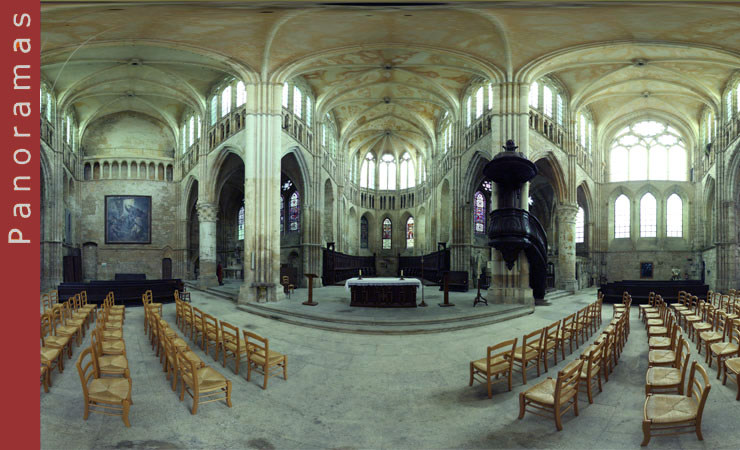
Panoramas
Look around the interior as if we are actually there, allowing us to see the forms and details in context. Stylistic differences and some of the more subtle building joints may be discernible.
-

Photos
The site surveys included photographic documentation that at the moment are not systematically indexed, but are provided as an additional resource.
-

COGA/Documents
The primary sources with the original Latin, the date, a translation, and identification of the source. These few sources are the foundation for any chronology of the creation of gothic.
-

Archive
An extensive archive of on-site notes, sketches, full-size drawings, and documentary photographs, and other invaluable information. They are preserved here as a resource.
-
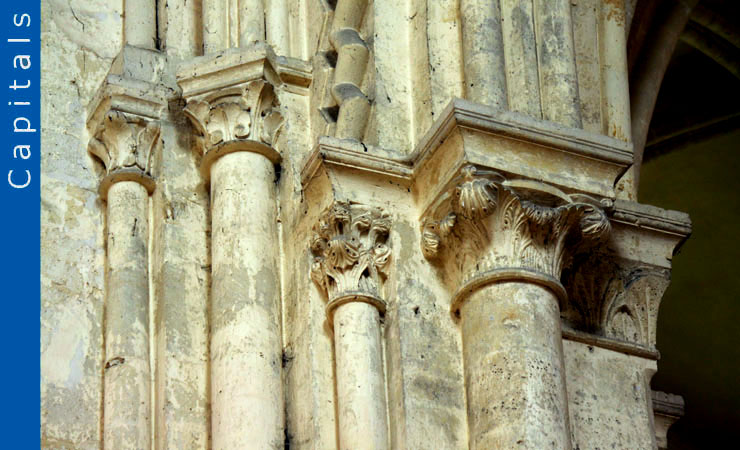
Capitals
The capitals are a major resource for dating and much of the chronology on this site depends on the morphological analysis, along with the identification of key carvers and their travels.
-
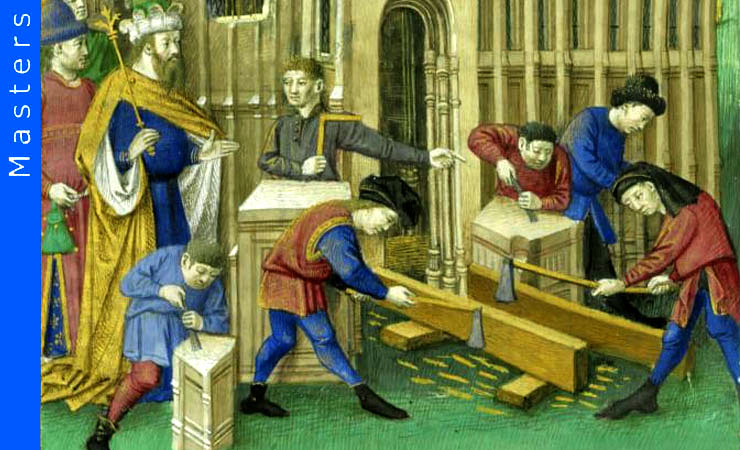
Masters
We can now attempt to identify groups of carving types, and even perceive individual carvers. The evolution of carving manner decade by decade underpins the chronology.

John James
When I was a boy my father would take me to the lovely little churches in the Sussex countryside. My passion for things medieval began there, with him.
After becoming an architect I was still haunted by this question: "How did a militaristic, authoritarian society create the most dazzling ethereal architecture of all times?"
To find the answers I examined one great building until I knew the geometry behind nearly every stone and which team placed them, and then spent three years searching for where the masters of Chartres could have worked. This formed the first inventory of Early Gothic churches in the Paris area, all 1600 of them that you can see here.
But when were they built? In visiting the same buildings many times I realised that the capitals offered the missing clue. So I photographed them all, and they too are here for you to enjoy.
Ultimately, I wish to answer this question so we may glimpse, no matter how tantalisingly and uncertainly, who created these inspired buildings? On my own, probably not, but with your help, who knows?
is to create a chronology for the 800 key Early Gothic churches in the Paris Basin before 1240 and to identify some real architects and sculptors as the basis for a history of the CREATION OF THE GOTHIC STYLE through the people who made it possible. The web has offered the only way to present this enormous mass of material that will at the same time allow you to explore as you wish. For more detail.
Basis for dating
The large churches with documented and reliable dating for parts are Chartres, Paris, Saint-Denis, Sens, Senlis, Reims and Soissons.
My holistic approach has used the development across the whole collection of these 800 buildings and tens of thousands of capitals
to date the phases of construction by decade, and thus to create a consistent and comprehensive chronology.
With so many undated buildings the capitals have become the key.
For a description of this procedure.

Dating before 1170
has been estimated mainly through connections between carvers and/or their templates, and the chronology of their travels. There are also boundaries that define the creative endeavour of the period, as you may read here.

Dating after 1180
In volume 1 of The Ark of God I proposed that since all the dated buildings after 1170 show that foliage evolved decade by decade from early spring to high summer, the foliage could be used to date most of the work of that period.

Dating by the year
is used primarily to sort the image displays; but also by (for example) placing a clerestory after an aisle we can estimate the in-between campaigns. For sculptural work it offers a proximate order for a carver’s development.

Features and analytics
This is an explorer's dream
For the first time all this data can be compared and analysed. Features, such as flying buttresses, are linked to phases and their dates, evolution can be filtered by decade, affiliation and region, and then assessed against the spending in the region. Data may be displayed on maps, as charts or lists with images (as above). It aims to show what scaffolding-enshrouded France looked like in any decade, and what a craftsman could have visited at any time, and thus glimpse the ideas (and people?) they could have met on their travels.

Maps and regions
The travels of individual carvers or of the templates they developed are set out in maps. They may be filtered by various levels of Confidence in the selection and Crtainty in the attributions.

Documents
These primary sources are those few that unambiguously refer to specific and recognisable construction phases for churches in the the Paris Basin during this period. Translated by Chris Henige.

Archival
Consists mainly of notes made on cards on-site between 1969 and 1989, to record the profiles and major elements. I had hoped to identify the master masons through their profiles, but so far with little success.

Nomenclature
There is a simple and logical way to describe the location of each part and each carving so that we may visualise where it is
without needing a plan. Check out this paper
for more detail.
Yet to be included
With time and luck the following should be completed quite soon.
I have surveyed all the churches with early rib vaults and placing this material with profiles and vault-forms will be my next priority.
It is reasonable to presume that master masons may be idenitified by the combination of templates they used.
As I have sketches for most of the templates used in over 800 buildings on the Notecards and full-size.
It would be an onorous task but possible - BUT I would need to know whether the project interests you and how you might want to use it.
Many of the photos of capitals in The Ark of God for the period after 1180 are waiting to be scanned and uploaded.
The more individualistic designs from the 1140s to 1170s are being collected into groups and these sorted in various levels of confidence and certainty
in order to identify the carving groups, and/or the actual carvers. This is an ongoing process.
In addition, I have reams of photos to be included, some detailed descriptions of buildings made over the years, and so on.
Also, a large archive on the carved portals with an analysis of how they and their sculpture relates to each other in the light of the dates suggested here.
It would be valuable highlight where carvers met each other and may have exchanged ideas.Were we to to have the time and money to create models of these buildings we could display a dynamic map of the Paris Basin
showing how much was being constructed in each decade, in the most graphic way.
All this can be done.
Credits
The bulk of the material on these buildings, the synopses, the dates and the capitals,
has been collected by me over the past fifty years.
The original software for this site was created by Chris Henige, to which he added panoramas,
models, and translated the latin texts that was part of the earlier on-site research.
Over the years our discussions enormously enriched our joint project.
Towards the end of 2017 we decided we were pursuing different aims and he has continued to
display his wonderful material through
fabricae.org
while I have further developed
the more interactive and analytic aspects in this site creationofgothic.org.
The software has been rebuilt in its entirety by Belinda Chisholm of Scotland, and extraordinary and painstaking task.
The success of this site and the vision I have for a history written more from the perspective of the
creators than from the uncertainty of style, will depend on the extent to which my readers
will share their passion, and interact with me on this abundant material.
For this I may develop a blog page to make connection easier.

